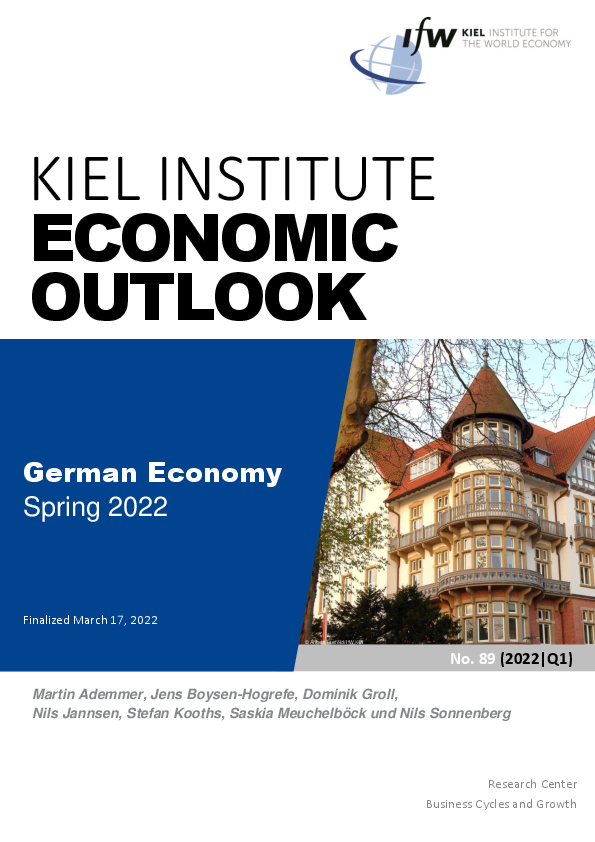Economic Outlook
German Economy Spring 2022: Recovery at risk – Soaring Inflation
Authors
Publication Date
Key Words
Related Topics
Labor Market
Fiscal Policy & National Budgets
Business Cycle Germany
The German economy is once again facing strong headwinds. The war in Ukraine is leading to rising commodity prices, new supply bottlenecks and dwindling sales opportunities. These factors will affect the German economy in different ways. Higher commodity prices reduce the purchasing power of disposable incomes and thus dampen private consumption. Moreover, new supply bottlenecks will dampen industrial production in the coming months. Finally, sales opportunities will deteriorate at least temporarily due to the sanctions and the increased uncertainty caused by the war. All this is hitting the economy in a phase in which the dampening effects of the pandemic are fading out and a strong recovery has begun to emerge. The dampening factors are cushioned because private households have accumulated large amounts of extra savings since the beginning of the pandemic, so that high inflation does not fully impact private consumption. In addition, industrial firms have an unusually high stock of orders, which will cushion the temporarily lower sales opportunities. As a result, the recovery is likely to continue this year, albeit at a noticeably slower pace than expected in winter. Overall, we now expect GDP to rise by 2.1 percent in this year (winter forecast: 4 percent) and by 3.5 percent in 2023 (winter forecast: 3.3 percent). With 5.8 percent inflation is likely to be higher this year than ever before in reunified Germany. Even if commodity prices stop rising and supply bottlenecks gradually ease, inflation is still likely to be unusually high at 3.4 percent next year, also because recent producer price increases are only gradually being passed through to consumers. The labor market is expected to remain robust. Public spending will rise in response to the war and its economic consequences, so that budget deficits will remain at elevated levels for a longer period.










